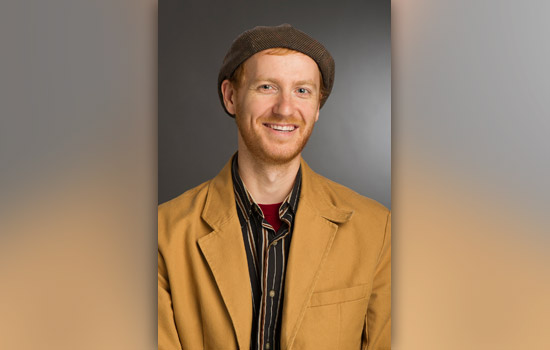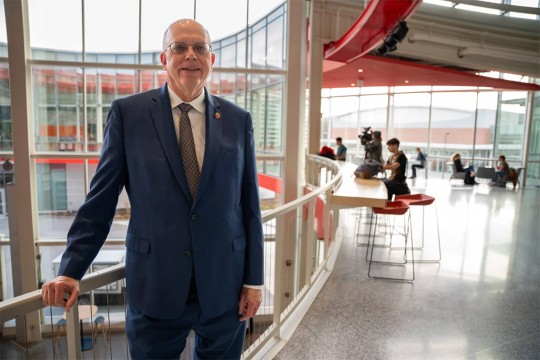Professors study nation’s electricity grid
RIT researchers’ computer-modeling method will yield solutions
Eric Hittinger
Much like the “shocking” Marvel Comics character Electro, Eric Hittinger is determined to find the best way to produce and utilize America’s electricity. He believes the secret lies in managing the electricity grid infrastructure—while simultaneously reducing costs and enhancing sustainability.
Hittinger, assistant professor of public policy in Rochester Institute of Technology’s College of Liberal Arts, is co-principal investigator for a $300,000 National Science Foundation grant to generate a new system of algorithmic computer modeling that simulates the future of America’s grid infrastructure. He’s working with Eric Williams, associate professor in RIT’s Golisano Institute for Sustainability, to devise the model that will take into account fluctuations in electricity demand and evolving technologies, and policy interventions, with the end result determining how the electricity grid should be developing to be most beneficial to society in the long run.
And there’s a lot at stake here. A 2011 study from the Electric Power Research Institute estimated that it could cost up to $476 billion over the next 20 years to establish a nationwide smart grid. The model that Hittinger and Williams develop could help determine the right mixes of technologies for that growth.
“Building a big grid model like this is actually one of the most cost effective ways for us to study how to grow our nation’s electricity grid,” Hittinger said. “The United States has an increasing need for more electricity and we need to meet that demand in the smartest way possible. The problem seems simple, but the answers are not as obvious as they may seem.”
Hittinger says there are major discrepancies between the plans of many current energy policymakers and those of environmental lobbyists. He believes that the current grid strategy is very straightforward—vying for the cheapest thing out there, such as building more coal or natural gas plants. He says if he can successfully demonstrate with this modeling that investing in more expensive technologies today is cheaper or better in the long run, it makes a case for continuing subsidies for photovoltaics, electric cars, wind turbines—and other policies that support this type of technology.
“Our analysis will be able to tell us just that,” he added.
In Hittinger’s program, outcomes such as the cost of electricity, carbon emissions and public investments for different grid solutions will be measured. And uncertainty, which Hittinger says is always present in “predicting the future,” is addressed through the use of the well-known Monte Carlo modeling and scenario analysis that relies on repeated random sampling to obtain numerical results.
“We also take technological progress into account, so we can see how building solar power now will bring down solar prices in the future,” he explained.
Hittinger is an engineer by trade and an expert in the economics, technical and policy aspects of energy issues. He is also engaged in significant research in the energy consumption of consumer electronics, valuation of energy storage, wind variability policy, public perceptions toward wind power, and the environmental footprint of computing services.
A self-proclaimed problem solver, he looks forward to working with a multidisciplinary team of RIT graduate students and faculty who will help complete the project over the next three years.
“I like finding the solutions to important, real-world problems, challenging myself and doing something different every day,” he added. “I’ve realized that I can find out where these problems are, chase after them and help fix them.”















